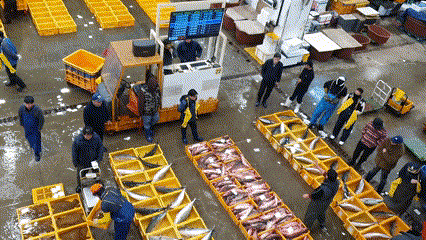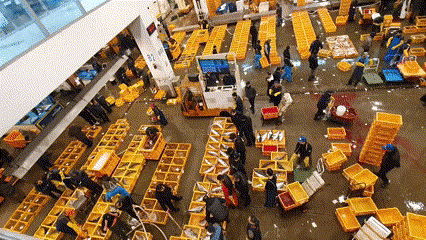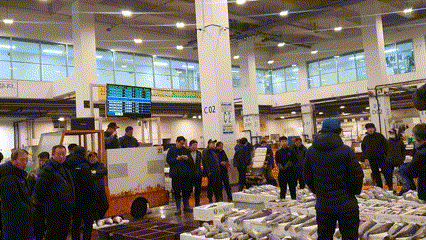*Only intermediate wholesalers registered by the Seoul City could participate in the auction. Never ever try to interfere with the auction
Preparation for Seafood Auction
First the Suhyup(National Federation of Fisheries Cooperatives) employees would measure the seafood that are enlisted and enter the auction.
The Suhyup employees would then weigh and print out a balance sheet of the seafood with waterproof paper and place it with the seafood.

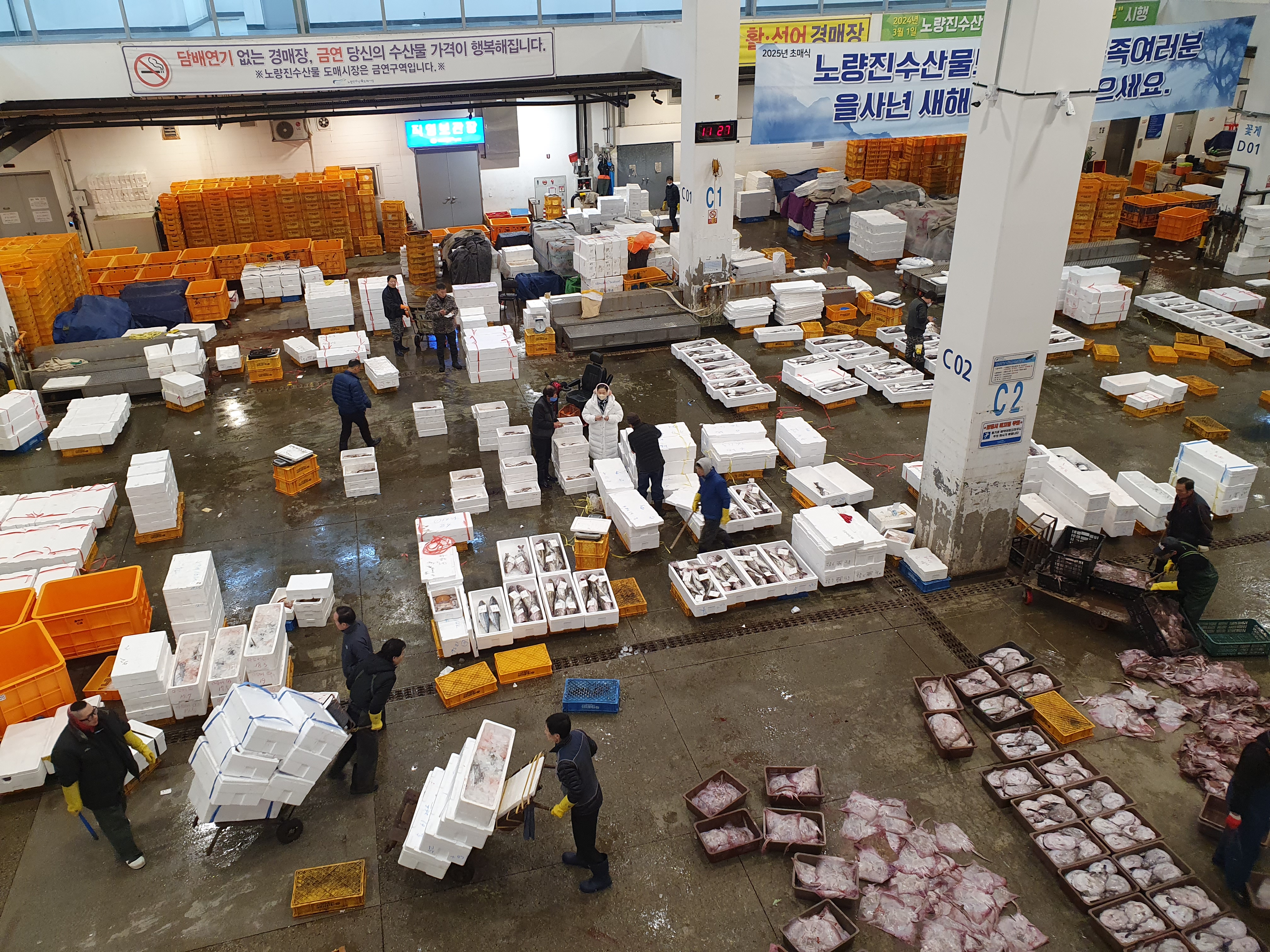


The balance sheet has the weight and information of the shipper that is important for the wholesale market and the retail market as this balance sheet states the crucial information about the seafood.
The balance sheet is placed with the seafood and once auction hours start, the auctioneer team of three enter with the auction truck and the intermediate wholesalers join the auctions that have their merchandise of interest.
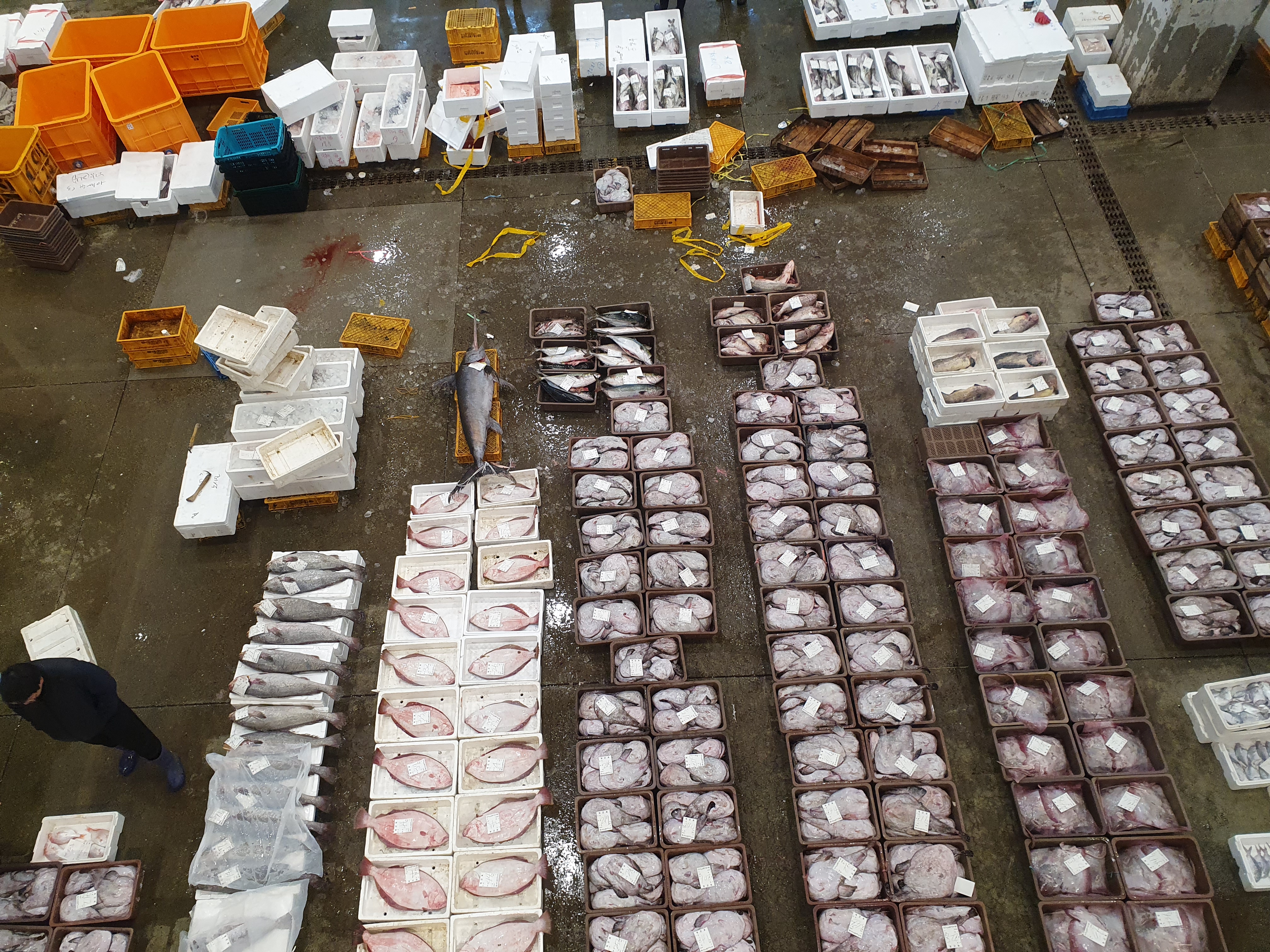
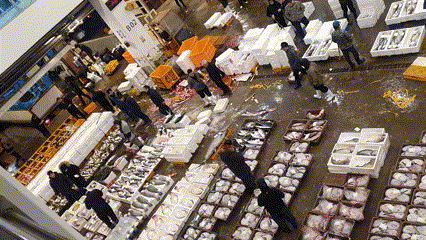

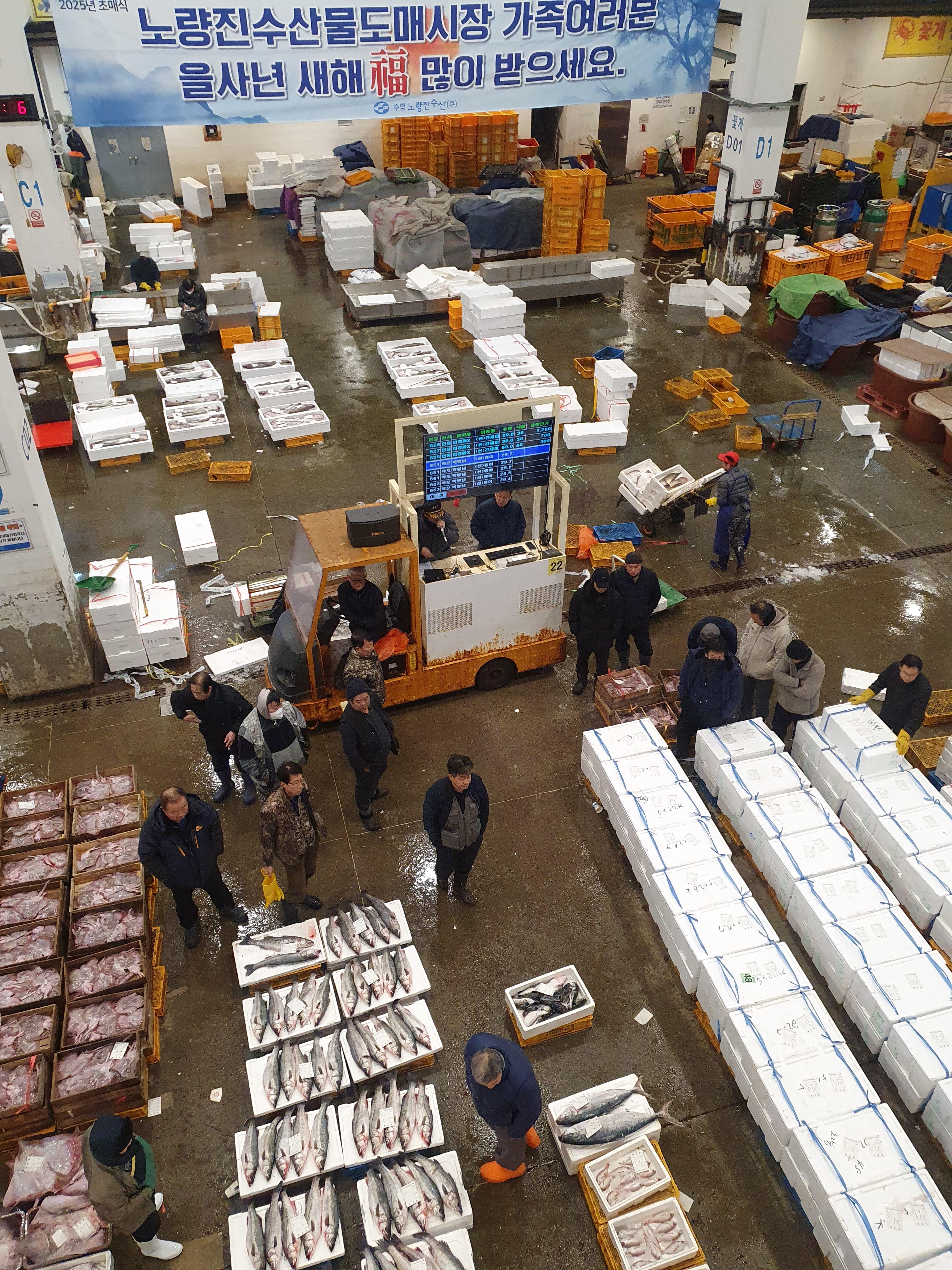
Hand Signs of the Seafood Auction of Noryangjin Fish Market
The live fish and fresh fish prices are volatile and the fierce competition makes the auction scene quite a view.
Electronic auctions were introduced to the Noryangjin Fish Market but the live fish and fresh fish auctions were so intense that the electronic auction proved inefficient and still hand signs are effective at the Noryangjin Fish Market.
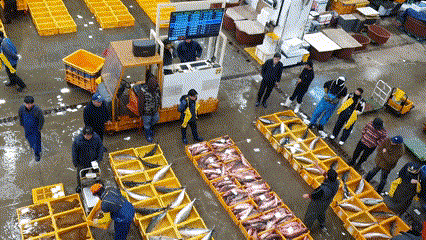

Intermediate wholesalers would give signs to the auctioneer that the prices are too high by making please lower the prices quick signs. They would make poker faces when the prices are high but when the goal prices come, the competition sparks.
*Only intermediate wholesalers registered by the Seoul City could participate in the auction. Never ever try to interfere with the auction
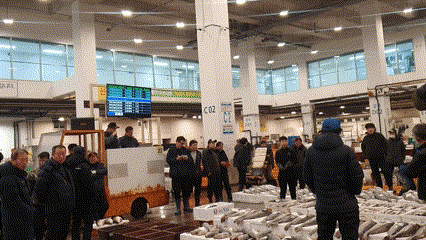
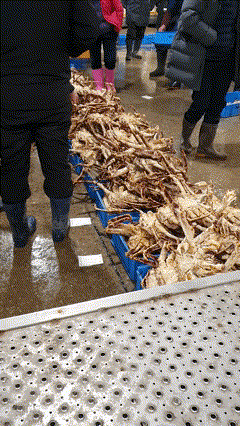
Hand Sign for the Number #1
Hand signs differ per regional. These are the hand signs for the Noryangjin Fish Market.
*Consumers cannot join the auction. Simply ask a numbered hat intermediate wholesaler to buy one for you. Only registered and licensed intermediate wholesalers could join the auction.
The hand sign for number #1 is a thumbs up.

Hand Sign for the Number #2
The hand sign for number #2 is the index finger and the middle finger up.

Hand Sign for the Number #3
The hand sign for number #3 is the thumbs, index finger and the middle finger up. This is to prevent any confusions with the number #8
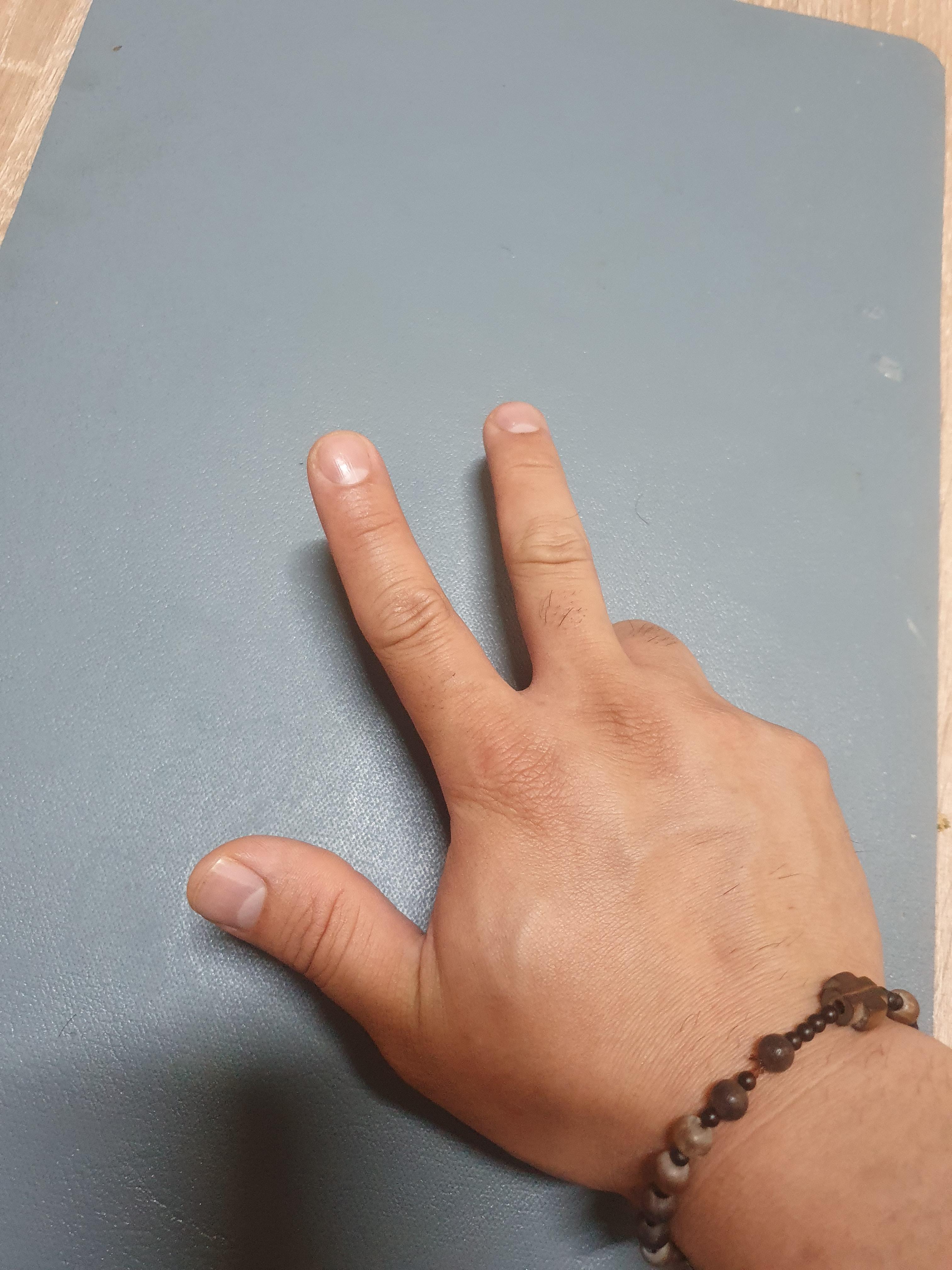
Hand Sign for the Number #4
For number #4, the rest of the fingers except for the thumbs are raised.

Hand Sign for the Number #5
For number #5, all the fingers are put up.

Hand Sign for the Number #6
For number #6, only the index finger is put up to represent the number six. This may be confused with number #1 hand sign but the number #1 hand sign is strictly only the thumbs up.

Hand Sign for the Number #7
To prevent confusion, the number #7 uses the ring finger and the pinkie(little finger) to indicate the number seven.

Hand Sign for the Number #8
Also to prevent the confusion with the number #3, the middle finger, ring finger and the pinkie are held up for the number #8.

Hand Sign for the Number #9'
For the number #9, the index finger is bent that resembles the shape of a number nine.

Hand Sign for the Number #10 digits
For the number 10 digits, the intermediate wholesaler would have to simply shake their fingers with the number that they want. Below are examples for number 10, 60, 70.
Hand Sign for the Number #10

Hand Sign for the Number #60
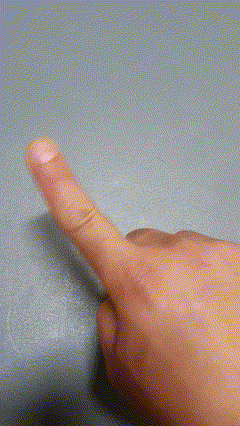
Hand Sign for the Number #80
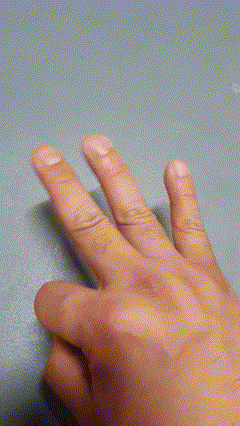
Hand Sign Interpretations
If a intermediate wholesaler wants to bid 18,000 KRW, the person would simply wave the thumb to indicate the number #10 then the person would hold still the middle finger, ring finger and the pinkie to represent a #8.


If an intermediate wholesaler would want to bid 89,000 KRW, the bidder would hold their pinkie and ring finger, middle finger and shake them together to represent the #80 and then hold the index finger and bend it while holding still to indicate the number #9.


Revenue system of the seafood market – Shippers
The shippers usually sort out and present the seafood at the auction as an attempt to get a higher bidding price. The shippers would stick to the auctioneer and communicate the desired prices with them.
Enlistment of the seafood itself costs 4.3%. The fixed costs for the shippers are the auction prices at regional suppliers that may change as well and the transportation cost to Seoul.
Shippers receive seafood from the suppliers such as the regional auctions and regional wholesales or the fishermen directly send seafood to the shippers.

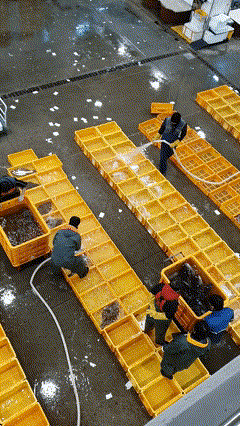
Freshness and quality of the seafood is indeed important. However, the supply of the other shippers also affect the revenue of the shippers.
By the simple supply-demand logic, if the supply of the same fish is high, the intermediate wholesalers might have to loss cut their merchandise.
On the other hand, if the supply of the same fish is low, the shippers could win a high revenue as the auction bid prices soar. Shippers would inform their desired prices usually higher than the appropriate prices to their auctioneers while waiting for the bid.
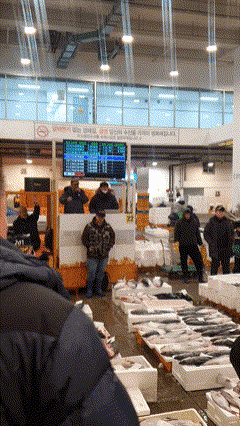
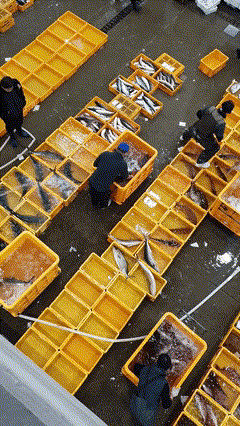
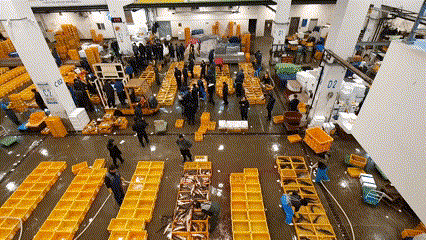
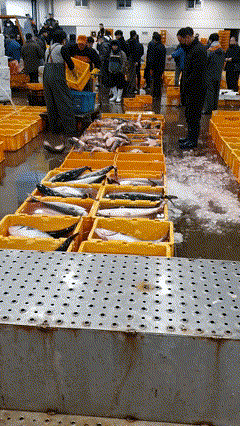
Shippers would appeal that their merchandise is good and sort the fish into A grade high quality to lower quality to receive a higher revenue.
If the shipper doesn’t loss-cut nor want to sell beneath a certain auction bid, the shipper could decide not to sell the seafood and try to manage a deal with the seafood by themselves as well.
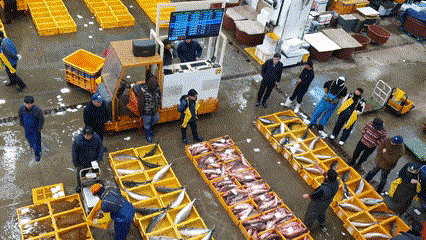
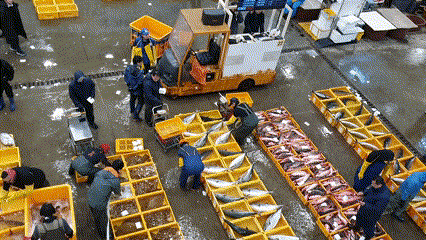
Shippers often share the risk and overhead costs with the suppliers (regional auctions, wholesales, fishermen etc) and the revenue.
Thus it is important to have many regional connections and knowledge on seafood supply as well as quality for the shipper to increase revenue.

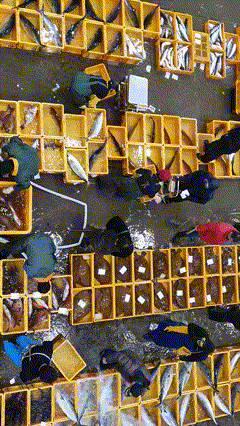
Revenue system of the seafood market – Auctioneers
Auctioneers are employees of the Suhyup(National Federation of Fisheries Cooperatives).
They don’t profit from the auction but they have to mediate between the shippers and the intermediate wholesalers while mediating the competition among the intermediate wholesalers.
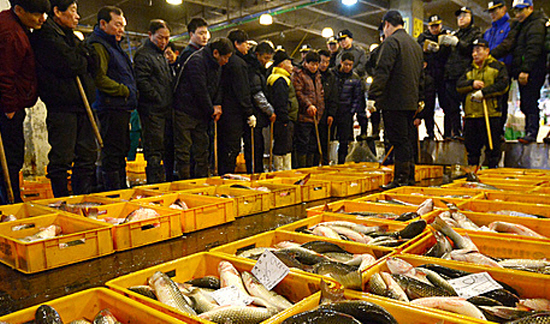
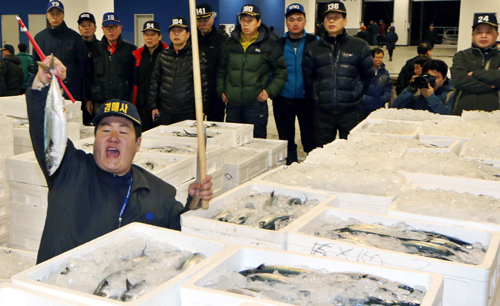
Revenue system of the seafood market – Intermediate wholesalers
The intermediate wholesalers are the people with the number hats at the auction. Each number indicates their autrhoized registration licenses number.
Unlike the perception in South Korea, the intermediate wholesalers only charge about 10% or a 2,000~8,000 KRW per kilogram depending on the type of seafood.
Fixed costs for the intermediate wholesalers include the seawater used for storage of fish or washing etc, transportation costs(surprisingly the shipping within the Noryangjin Fish Market is also fixed cost as transportation and distribution costs) and other overhead costs including the rent of office at Noryangjin.


The contracts between businesses and intermediate wholesalers vary. Some contracts deal with seafood of a fixed type so bidding at a lower price could generate profit while if bidding at higher prices, there is a loss.
However most contracts seem to charge a certain % of the daily auction prices. The intermediate wholesaler, however, is still obligated to the daily auction prices and should successfully bid at lower prices for business sustainability and contract extensions with businesses.
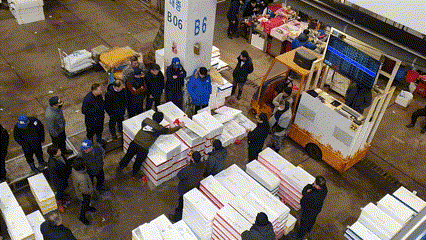

It is easy to change their vendors for retail stores when the intermediate wholesalers don’t satisfy them.
Thus it is very complicated but intermediate wholesalers must satisfy their business partners with both the quality and the auction pricing with their auction bidding skills and have proper management skills of stocks predicting the daily supply and demand.
